Menu
- Strona główna
- Zespół Centrum
- Badania
- Publikacje
- Linki
- Kontakt
- Archiwum
- Zagłada Żydów. Studia i Materiały
pismo naukowe Centrum - Dalej jest noc - »Nieudana KOREKTA OBRAZU«
- Wybór źródeł
- EHRI PL
Aktualności
Otwarte Seminarium Naukowe Centrum: Karolina Koprowska, Rozczarowanie i nadzieja – dwa dyskursy o przyszłości Żydów w powojennej Polsce
Otwarte Seminarium Naukowe Karolina Koprowska "Rozczarowanie i nadzieja – dwa dyskursy o przyszłości Żydów w powojennej Polsce" Spotkanie odbędzie się w środę 10 grudnia br. w sali 161 w Pałacu Staszica (ul. Nowy Świat 72) o godz. 11.00...
Premiera książki Karolin Panz pt. Chciałabym opowiedzieć jak zginęło miasto
10 grudnia o godz. 18.00 zapraszamy do Muzeum POLIN na premierę książki Karoliny Panz pt. "Chciałabym opowiedzieć jak zginęło miasto. Zagłada żydowskich mieszkańców Nowego Targu". Z autorką rozmawiać będzie Anna Bikont Postanowiłam, że odtworzę i opiszę h...
International Summer School
CfP: International Summer School „Innovative Perspectives on Holocaust Research: Sources, Methods, and Digital Tools" UPDATE: NEW DEADLINE: DECEMBER 7, 2025 International Summer School „Innovative Perspectives on Holocaust Research: Sources, Me...
Spotkanie z Michałem Kowalskim wokół sokołowsko-węgrowskiego rozdziału DALEJ JEST NOC
Zapraszamy na spotkanie autorskie z Michałem Kowalskim autorem rozdziału dotyczącego powiatu sokołowsko-węgrowskiego w książce "OTO WIDAĆ i OTO SŁYCHAĆ. Świadkowie Zagłady w okupowanej Polsce" ...
Program seminariów naukowych Centrum na semestr zimowy 2025
Już za niespełna miesiąc wracamy z cyklem seminariów naukowych, na które serdecznie zapraszamy wszystkich zainteresowanych! Seminaria będą się odbywać w drugą lub trzecią środę miesiąca, stacjonarnie w Instytucie Filozofii i Socjologii PAN (ul. Nowy Świat 72, sala 161) ...
NEWSLETTER
 Chciałabym opowiedzieć jak zginęło miasto ...
Chciałabym opowiedzieć jak zginęło miasto ...
Zagłada Żydowskich mieszkańców Nowego Targu
Karolina Panz
Warszawa 2025
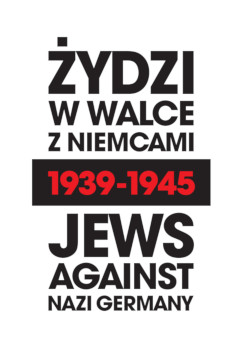
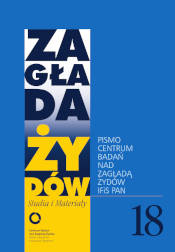 Zagłada Żydów.
Zagłada Żydów.
Studia i Materiały
nr 18, R. 2022
Warszawa 2022
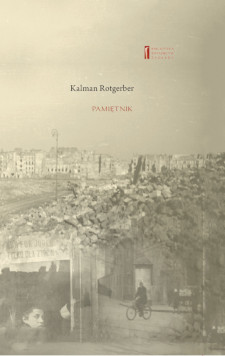 PAMIĘTNIK
PAMIĘTNIK
Kalman Rotgeber
oprac. Aleksandra Bańkowska, wstęp Jacek Leociak
Warszawa 2021
Zagłada Żydów.
Studia i Materiały
nr 17, R. 2021
Warszawa 2021
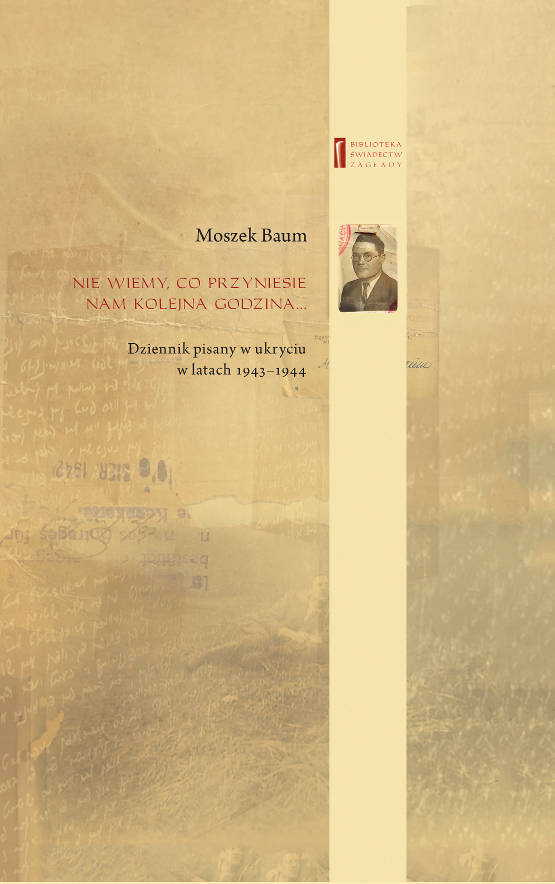 NIE WIEMY CO PRZYNIESIE NAM KOLEJNA GODZINA ...
NIE WIEMY CO PRZYNIESIE NAM KOLEJNA GODZINA ...
Dziennik pisany w ukryciu w latach 1943-1944
Moszek Baum, oprac. Barbara Engelking, tłum. z jidysz Monika Polit
Warszawa 2020
Zagłada Żydów.
Studia i Materiały
nr 16, R. 2020
Warszawa 2020
.jpg) Aryjskiego Żyda wspomnienia, łzy i myśli
Aryjskiego Żyda wspomnienia, łzy i myśli
Zapiski z okupacyjnej Warszawy
Sewek Okonowski, oprac. Marta Janczewska
 PISZĄCY TE SŁOWA JEST PRACOWNIKIEM
PISZĄCY TE SŁOWA JEST PRACOWNIKIEM
GETTOWEJ INSTYTUCJI ...
'z Dziennika' i inne pisma z łódzkiego getta
Józef Zelkowicz, tłum. z jidysz, oprac. i wstęp. Monika Polit
Warszawa 2019
CZYTAJĄC GAZETĘ NIEMIECKĄ ...
Dziennik pisany w ukryciu w Warszawie w latach 1943-1944
Jakub Hochberg, oprac. i wstępem opatrzyła Barbara Engelking
Warszawa 2019
Zagłada Żydów.
Studia i Materiały
nr 15, R. 2019
Warszawa 2019
.jpg) Zagłada Żydów.
Zagłada Żydów.
Studia i Materiały
nr 14, R. 2018
Warszawa 2018
 DALEJ JEST NOC. Losy Żydów w wybranych powiatach okupowanej Polski
DALEJ JEST NOC. Losy Żydów w wybranych powiatach okupowanej Polski
red. i wstęp Barbara Engelking, Jan Grabowski
Warszawa 2018
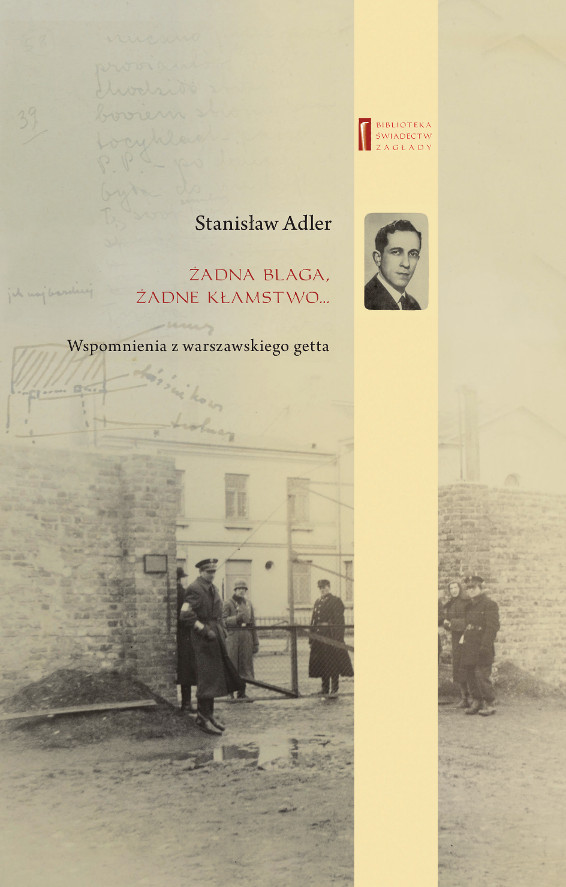 ŻADNA BLAGA, ŻADNE KŁAMSTWO ...
ŻADNA BLAGA, ŻADNE KŁAMSTWO ...
Wspomnienia z warszawskiego getta
Stanisław Adler, oprac. i wstępem opatrzyła Marta Janczewska
Warszawa 2018
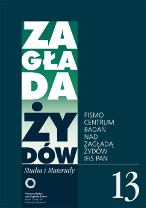 Zagłada Żydów.
Zagłada Żydów.
Studia i Materiały
nr 13, R. 2017
Warszawa 2017
 TYLEŚMY JUŻ PRZESZLI ...
TYLEŚMY JUŻ PRZESZLI ...
Dziennik pisany w bunkrze (Żółkiew 1942-1944)
Clara Kramer, oprac. i wstępem opatrzyła Anna Wylegała
Warszawa 2017
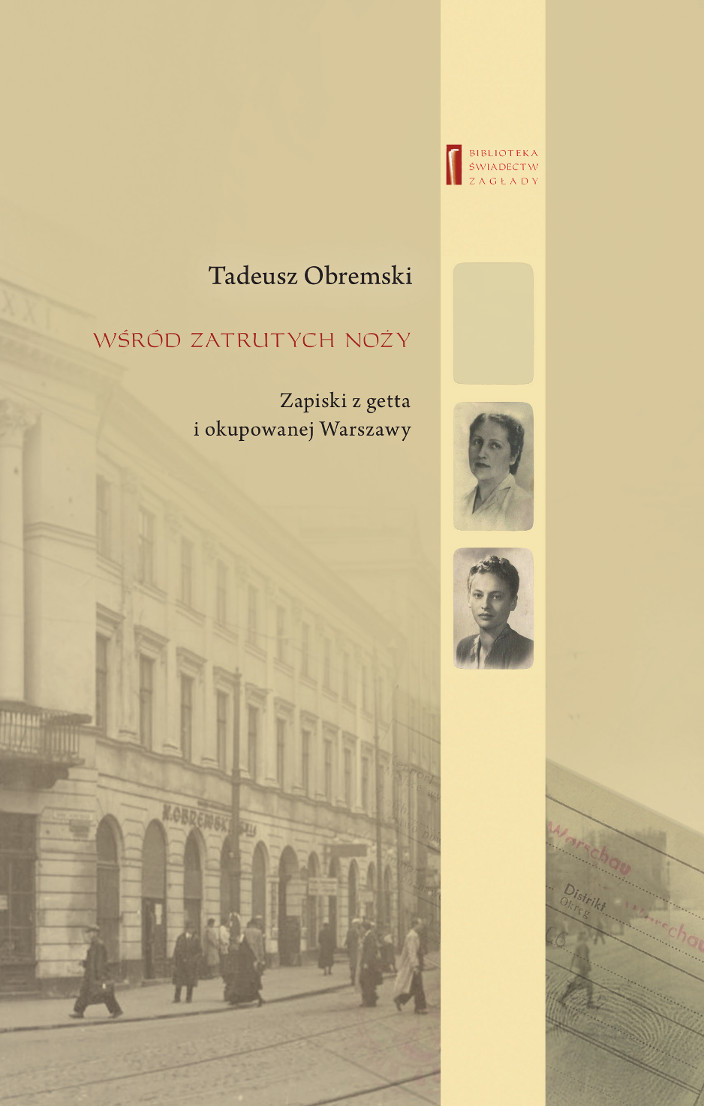 WŚRÓD ZATRUTYCH NOŻY ...
WŚRÓD ZATRUTYCH NOŻY ...
Zapiski z getta i okupowanej Warszawy
Tadeusz Obremski, oprac. i wstępem opatrzyła Agnieszka Haska
Warszawa 2017
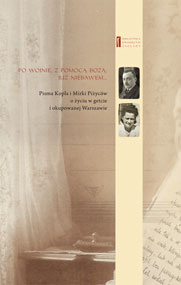 PO WOJNIE, Z POMOCĄ BOŻĄ, JUŻ NIEBAWEM ...
PO WOJNIE, Z POMOCĄ BOŻĄ, JUŻ NIEBAWEM ...
Pisma Kopla i Mirki Piżyców o życiu w getcie i okupowanej Warszawie
oprac. i wstępem opatrzyła Barbara Engelking i Havi Dreifuss
Warszawa 2017
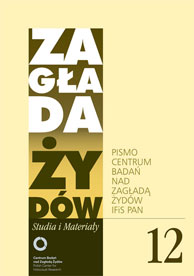 Zagłada Żydów.
Zagłada Żydów.
Studia i Materiały
nr 12, R. 2016
Warszawa 2016
.jpg) SNY CHOCIAŻ MAMY WSPANIAŁE ...
SNY CHOCIAŻ MAMY WSPANIAŁE ...
Okupacyjne dzienniki Żydów z okolic Mińska Mazowieckiego
oprac. i wstępem opatrzyła Barbara Engelking
Warszawa 2016
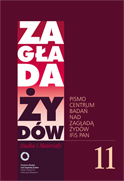 Zagłada Żydów.
Zagłada Żydów.
Studia i Materiały
nr 11, R. 2015
Warszawa 2015
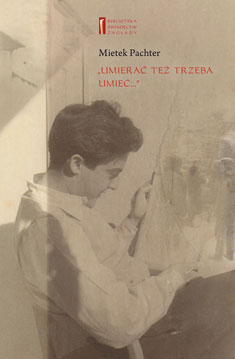 Mietek Pachter
Mietek Pachter
UMIERAĆ TEŻ TRZEBA UMIEĆ ...
oprac. B. Engelking
Warszawa 2015
 Zagłada Żydów.
Zagłada Żydów.
Studia i Materiały
nr 10, t. I-II, R. 2014
Warszawa 2015
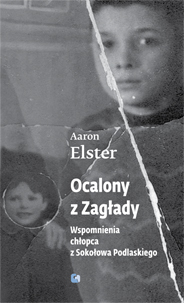 OCALONY Z ZAGŁADY
OCALONY Z ZAGŁADY
Wspomnienia chłopca z Sokołowa Podlaskiego
tłum. Elżbieta Olender-Dmowska
red .B. Engelking i J. Grabowski
Warszawa 2014
 ZAGŁADA ŻYDÓW. STUDIA I MATERIAŁY
ZAGŁADA ŻYDÓW. STUDIA I MATERIAŁY
vol. 9 R. 2013
Pismo Centrum Badań nad Zagładą Żydów IFiS PAN
Warszawa 2013
 ... TĘSKNOTA NACHODZI NAS JAK CIĘŻKA CHOROBA ...
... TĘSKNOTA NACHODZI NAS JAK CIĘŻKA CHOROBA ...
Korespondencja wojenna rodziny Finkelsztejnów, 1939-1941
oprac. i wstępem opatrzyła Ewa Koźmińska-Frejlak
Warszawa 2012
Raul Hilberg
PAMIĘĆ I POLITYKA. Droga historyka Zagłady
tłum. Jerzy Giebułtowski
Warszawa 2012
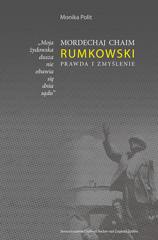 Monika Polit
Monika Polit
"Moja żydowska dusza nie obawia się dnia sądu."
Mordechaj Chaim Rumkowski. Prawda i zmyślenie
Warszawa 2012
.jpg) Dariusz Libionka i Laurence Weinbaum
Dariusz Libionka i Laurence Weinbaum
Bohaterowie, hochsztaplerzy, opisywacze. Wokół Żydowskiego Związku Wojskowego
Warszawa 2011
.jpg) Zagłada Żydów.
Zagłada Żydów.
Studia i Materiały
R. 2011, nr. 7; Warszawa 2011
.jpg) Jan Grabowski
Jan Grabowski
JUDENJAGD. Polowanie na Żydów 1942.1945.
Studium dziejów pewnego powiatu
Warszawa 2011
.jpg) Stanisław Gombiński (Jan Mawult)
Stanisław Gombiński (Jan Mawult)
Wspomnienia policjanta z warszawskiego getta
oprac. i wstęp Marta Janczewska
Warszawa 2010
Holocaust Studies and Materials
Journal of the Polish Center for Holocaust Research
Warssaw 2010
.jpg) Żydów łamiących prawo należy karać śmiercią!
Żydów łamiących prawo należy karać śmiercią!
"Przestępczość" Żydów w Warszawie, 1939-1942
B. Engelking, J. Grabowski
Warszawa 2010
Zagłada Żydów.
Studia i Materiały
R. 2010, nr. 6; Warszawa 2010
Wybór źródeł do nauczania o zagładzie Żydów
Ćwiczenia ze źródłami
red. A. Skibińska, R. Szuchta
Warszawa 2010
.jpg) W Imię Boże!
W Imię Boże!
Cecylia Gruft
oprac. i wstęp Łukasz Biedka
Warszawa 2009
Zagłada Żydów.
Studia i Materiały
R. 2009, nr. 5; Warszawa 2009
.jpg) Żydzi w powstańczej Warszawie
Żydzi w powstańczej Warszawie
Barbara Engelking i Dariusz Libionka
Warszawa 2009
 Reportaże z warszawskiego getta
Reportaże z warszawskiego getta
Perec Opoczyński
Warszawa 2009
 Notatnik
Notatnik
Szmul Rozensztajn
Warszawa 2008
.jpg) Holocaust
Holocaust
Studies and Materials.
English edition
2008, vol. 1; Warsaw 2008
.jpg) Źródła do badań nad zagładą Żydów na okupowanych ziemiach polskich
Źródła do badań nad zagładą Żydów na okupowanych ziemiach polskich
Przewodnik archiwalno-bibliograficzny
Alina Skibińska, wsp. Marta Janczewska, Dariusz Libionka, Witold Mędykowski, Jacek Andrzej Młynarczyk, Jakub Petelewicz, Monika Polit
Warszawa 2007
Zagłada Żydów. Studia i Materiały
R. 2007, nr. 3; Warszawa 2007
Prowincja noc.
Życie i zagłada Żydów w dystrykcie warszawskim
Warszawa 2007
.jpg) Utajone miasto.
Utajone miasto.
Żydzi po 'aryjskiej' stronie Warszawy [1941-1944]
Gunnar S Paulsson
Kraków 2007
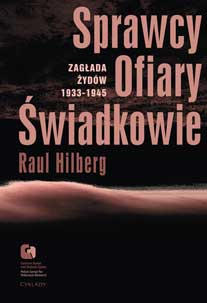 Sprawcy, Ofiary, Świadkowie.
Sprawcy, Ofiary, Świadkowie.
Zagłada Żydów, 1933-1944
Raul Hilberg
Warszawa 2007
Zagłada Żydów. Studia i Materiały
R. 2006, nr. 2; Warszawa 2006
"Jestem Żydem, chcę wejść!".
Hotel Polski w Warszawie, 1943.
Agnieszka Haska
Warszawa 2006
Zagłada Żydów. Studia i Materiały
R. 2005, nr. 1; Warszawa 2005
.jpg) 'Ja tego Żyda znam!'
'Ja tego Żyda znam!'
Szantażowanie Żydów w Warszawie, 1939-1943.
Jan Grabowski
Warszawa 2004
 'Szanowny panie Gistapo!'
'Szanowny panie Gistapo!'
Donosy do władz niemieckich w Warszawie i okolichach, 1940-1941
Barbara Engelking, Warszawa 2003
aaa
ul. Nowy Świat 72, 00-330 Warszawa;
Palac Staszica pok. 120
e-mail: centrum@holocaustresearch.pl
Recenzje angielskiego wydania Przewodnika ...
Recenzje angielskiego wydania Przewodnika ...
09.09.2009 06:39:46
Najnowsze recenzje z anglojęzycznej edycji The Warsaw Ghetto. A Guide to the Perished City B. Engelking i J. Leociaka pióra Michaela R. Marrusa, Adama Kirscha i Shmuela Ben Eliezera
|
July 13, 2009
|
The Warsaw Ghetto
A Guide to the Perished City
Barbara Engelking and Jacek Leociak
http://yalepress.yale.edu/yupbooks/book.asp?isbn=9780300112344
![]()
The Warsaw Ghetto: A Guide to the Perished City, by Barbara Engelking and Jacek Leociak
Reviewed by Michael R. Marrus
Readers of this massive chronicle of the Warsaw Ghetto will be amazed at the intense aptitude for life of its oppressed, starving, disease-ridden, cold and often bereaved inhabitants
Translated from the Polish edition, which appeared in 2001, this is a stunning work, one of the most important books on the history of the Nazi Holocaust. Presenting an astonishing amount of information, carefully evaluated and usefully organized, The Warsaw Ghetto is not only a lasting guide to a great Jewish city, it is a monument to contemporary Polish scholarship, on which it draws so heavily, and a moving memorial to the nearly half a million Jews who at one time or another suffered in one of the Germans' most grotesque creations during the Second World War.
The authors, two scholars at the Polish Academy of Sciences, Barbara Engelking and Jacek Leociak, have combed a vast array of documentary sources – in Poland, Israel and elsewhere – as well as a small library of diaries, memoirs, secondary literature and other sources, including scores of photographs.
The book comes with eight maps, three of which, in a pocket at the inside back cover, depict the ghetto at three moments in time – the last being present-day Warsaw, set against the wartime plan of the now-destroyed ghetto. On these, readers will be able to find every street, every house (even house numbers), every gate, every public building, every cemetery, every park, together with railway lines, bookshops, entertainment spots, ritual baths and places of worship – and then, in over 800 pages of text, read about such matters as the price of bread and how it changed, the structure of smuggling, laundry, garbage disposal, the Nazi-imposed Jewish government, the circulation of books in libraries, the underground press, Jewish humour, disease, hospitals, pharmacies, shops, clandestine education, postal services, telephones, street life, religious life, murders by the authorities, deportations to Treblinka, and of course the Warsaw Ghetto Uprising.
Why bother, one might ask, particularly when so much has been written before. I suspect that no reader who seriously embarks on this volume will ask this question, so compelling is it to engage with the comprehensive recreation, through text, of the life of an entire modern city that has completely disappeared – and has been recovered just as compellingly as Pompeii or monuments of the ancient world.
Of course, Warsaw was especially important. Warsaw in the 1930s had the largest concentration of Jews in Europe and the second, after New York, in the world – home at the outbreak of the war to close to 400,000 Jews, constituting nearly 30 per cent of the total population of the Polish capital, effectively a bi-national city, as one author has put it. Sealed off as a Jewish ghetto by the Germans in November, 1940, and then progressively reduced in size as the occupiers tightened their controls and shifted their policies toward the Jewish inhabitants, the numbers changed as thousands died from starvation, exposure and disease, but also thousands of newcomers were packed inside the walls, sent from other parts of Poland.
Then, in July, 1942, the Nazis began a massive deportation of Jews to be murdered in the death camp of Treblinka. Over a quarter-million Jews left Warsaw within a few months. The next spring, with about 80 per cent of the ghetto's population already destroyed, and as the Germans were preparing to eliminate the rest, remnants among the survivors began a heroic and suicidal uprising against the occupation – the first instance of an armed civilian revolt against the Germans anywhere in occupied Europe. Fighting went on for weeks, and the repression involved the liquidation of what remained of the ghetto – street by street, building by building.
As the combat raged, what remained of the Jewish population went underground, to bunkers constructed as a final refuge. Engelking and Leociak, inquisitive and generous with information, list in an appendix the addresses of 80 bunkers, together with a brief description and their evidentiary source. I note for example, among many others, a bunker at 20-21 Franciszkañska Street: “Garbage collectors' bunker. It had an underground connection to the sewers; before the uprising smugglers brought in their goods this way from the Aryan side."
Or another, on 18 Mi{lstrok}a Street: “The best and largest bunker in the ghetto (it held about 300 people), under the courtyard, owned by a gang of thieves. It had several exits. The boss of the gang, Szmul Osyer, made it available to the ZOB [the Jewish Fighting Organization, or main resistance group]. In this bunker the high command of the ZOB committed suicide on 8 May, the day that it was discovered by the Germans."
Readers may be surprised at the demonstration of the most intense aptitude and appetite for organization among the ghetto's inhabitants. Whatever motivated and enabled these starving, disease-ridden, cold and often bereaved inhabitants to create smuggling networks, a sophisticated municipal government, a whole array of social-service institutions, clandestine newspapers, theatres, libraries, concerts, underground universities, vocational training and business enterprises?
Some of the explanation may be found in prewar Jewish Warsaw, an extraordinarily sophisticated, diverse and talented society onto which the Germans imposed, in a paradoxical way, a kind of Jewish republic. But there was something else, which enlivens these pages – an unquenchable sense, likely fed by desperation, that doing something was perhaps the only alternative to utter despair, which would mean surrendering to the Germans' murderous plans.
There was something absurd about the Warsaw Ghetto, as its inhabitants could not help but observe and wrote about frequently. Why were they in this situation? Why did the Germans pack them together for no apparent purpose? The authors include a quotation from the notes of Janusz Korczak, the famous Warsaw Jewish educator. A customer complained to a Jewish merchant, when making a purchase. The merchant's wife replied: “My good woman, these are not goods, and this is not a shop, and you are not a customer, and I am not a shopkeeper, and I am not selling you anything, and you are not paying, for these pieces of paper are not money. You don't lose anything, I don't earn anything. Who cheats anyone today, and what would it be for? It's just that you have to do something. Well, isn't that true?"
Michael R. Marrus is a Senior Fellow of Massey College. His latest book, to appear in October, is entitled Some Measure of Justice: The Holocaust Era Restitution Campaign of the 1990s.
![]()
A NEW READ ON JEWISH LIFE
Atrocious Normalcy. A new study of the Warsaw Ghetto features the brutal and the banal
by Adam Kirsch
In 1943, the Polish poet Czeslaw Milosz, who was living in Nazi-occupied Warsaw, wrote “Campo dei Fiori,” his great poem about the coexistence of normality and atrocity. The Campo dei Fiori is the plaza in Rome where, in the year 1600, the heretical philosopher Giordano Bruno was burned alive by the Catholic Church; “before the flames had died,” Milosz writes, “the taverns were full again.” The same willed blindness could be noted in Warsaw, the poem declares. Just outside the wall of the Warsaw Ghetto, where the Jews were being starved and shot, a Ferris wheel was operating: “The bright melody drowned/the salvos from the ghetto wall,/and couples were flying/high in the cloudless sky.”
Milosz draws the comparison not to chastise “the people of Rome or Warsaw,” he says, but rather to capture:
the loneliness of the dying,
of how, when Giordano
climbed to his burning
he could not find
in any human tongue
words for mankind,
mankind who live on.
The poem, one of the first ever written about the Holocaust, captures what is perhaps its essential terror—the way the Nazis cut off their Jewish victims, legally, morally, and physically, from the rest of mankind. The Warsaw Ghetto was the logical culmination of Nazi anti-Semitism, a place where Jews could be murdered literally under the eyes of their neighbors, without anyone protesting or even paying attention.
This silencing of the Jews is one reason why every new communication from the Holocaust’s victims and witnesses—and they are still being found, 65 years later—represents not just an addition to our historical knowledge, but a kind of moral and metaphysical victory. From the diary of Anne Frank to the Ponary Diary of Kazimierz Sakowicz—buried in empty lemonade bottles in 1943, not published until 1999—such testimony refutes the Nazi idea that any part of the human race could be permanently forgotten. Hannah Arendt made this point in Eichmann in Jerusalem: “The holes of oblivion do not exist. Nothing human is that perfect, and there are simply too many people in the world to make oblivion possible.” It follows, Arendt writes, that “nothing”—no act of resistance or commemoration, even by those who consider themselves totally abandoned—“can ever be ‘practically useless,’ at least, not in the long run.”
The Warsaw Ghetto: A Guide to the Perished City (Yale University Press), an encyclopedic study by Barbara Engelking and Jacek Leociak, is a monument to that saving principle. The book, published in Polish in 2001 and now translated into English by Emma Harris, offers a decisive answer to Milosz’s despairing poem. Far from leaving no words “in any human tongue,” Engelking and Leociak show, the Jews who lived and died in the Warsaw Ghetto left so much evidence and testimony that we can reconstruct their world in amazing detail.
Simply listing some of the information Engelking and Leociak have recovered—from published memoirs, private documents, and Jewish and Polish archives—gives a sense of the scope of their undertaking. The names, phone numbers, and addresses of the functionaries in the Judenrat; the street corners where the Jewish “Order Service” police maintained permanent posts; the average number of calories consumed daily by different social groups (ranging from a minimal “high” of 1,665 for Judenrat officials to a mere 784 for beggars); a list of all the shops and businesses in the Ghetto (at 72 Zelazna Street, for instance, were a food shop run by M. Kotman, a florist run by M. Stok, a “shop” run by Sz. Rosenberg, and a clothing bazaar, owner unknown); and a calendar of all the concerts and plays performed in the Ghetto, complete with excerpts from newspaper reviews (at a concert in March 1942, David Zajdel and Maksymilian Filar played violin sonatas by Handel and Mozart, but “the pianist was insufficiently attuned to the violinist”).
Even these scattered details begin to show what was so uncanny about the Warsaw Ghetto: the persistence of the ordinary forms of modern urban life, in a place that was essentially a waiting room for Treblinka. Engelking and Leociak divide their book into six major sections, and the first four—“Topography and Communications,” “Institutions,” “Economic Life,” and “Community Life”—deal not with dying but with living. Not until the final two sections, “Deportation” and “The Armed Struggle,” does the reader encounter the inevitable fate of almost everyone in the Warsaw Ghetto.
This is an accurate reflection of the way the Jews of Warsaw experienced the Ghetto. Unlike the millions of Jews killed in Soviet territory by the mobile death squads or Einsatzgruppen, or the millions more deported to labor and death camps like Auschwitz, the 400,000 or so Jews who occupied the Ghetto were not instantly condemned to death by the Nazis. Rather, they lived in the strange interlude between the German occupation of Poland, in September 1939, and the official decision of the Nazi leadership to exterminate all the Jews, in early 1942. During this period, the Germans chose to torment the Jews of Warsaw—the largest Jewish population in the world, outside of New York—by concentrating them in a walled ghetto, destroying their religious and economic life, reducing them to starvation rations, and allowing epidemics, especially typhus, to rage freely.
From October 1940, when the ghetto was sealed off, until July 1942, when the “great deportation Aktion” began, approximately 2,500 Jews died there every month. The overall population did not drastically decline, however, because the Ghetto was constantly being filled with Jews deported from other parts of Poland and Germany. It is the life led in the Ghetto in this period, when death was ever-present but not yet totally inevitable, that The Warsaw Ghetto explores so meticulously.
That life could not be called ordinary; it was, rather, a macabre parody of ordinariness. There was a kind of government—the Judenrat or Jewish Council, led by the prewar civic notable Adam Czerniakow, which was in charge of everything from supplying the Ghetto with food to delivering the mail to burying the dead. There was a kind of economy, mostly illegal, in which small manufacturers recycled the Jews’ remaining possessions into items for the Polish and German market: milk cans, cheap shoes, brushes, chemicals, soap, rubber goods, and electrical appliances are among the products documented. There was a kind of police force, the Order Service, with Jewish personnel and its own uniform; there was even “a fashionable children’s toy consisting of the uniform and accessories of the Order Service.” There was an official Jewish newspaper—the Gazeta Zydowska, widely despised as a Nazi puppet—and many unofficial publications copied on typewriters or by hand. For the few Jews who brought a lot of money into the Ghetto, and the few others who made a lot on the black market, there were even restaurants, cafes, and theaters to patronize. One entrepreneur created a “beach” in an open lot, where you could pay to lie on a deck chair.
But while the statistics and surveys in The Warsaw Ghetto give the facts of this life, it is inevitably the personal memories and anecdotes that suggest its real tenor. The Germans postered the Ghetto with placards showing a caricatured Jew and a huge louse, with the words “Jews—lice—typhus.” When a cow appeared in Zamenhof Street, it created “a general sensation and lively discussion” among the children, who had never seen one before; they also had no memories of rivers (though Warsaw is on a river, the Vistula didn’t run through the Ghetto), or even of trees. Stepping into the street in the morning, you would find corpses, including the corpses of children—one woman remembered finding a dead child covered with a poster put out by a Jewish charitable group, bearing the slogan “Save the children! Our children must live!”
It became impossible to keep kosher—one of the Nazis’ first acts, even before the Ghetto was created, was to ban kosher slaughter—or observe the Sabbath. For most of the life of the ghetto, public worship was banned, and all schools, religious and secular, were closed. Public drunkenness was common, and people told desperate, horrifying jokes. There was even a town fool, one Rubinsztajn (the book consistently uses Polish spellings), who “roamed through the streets with his peculiar hopping gait, uttering wild yells and singing ‘Alle glaych, utym yn raych!” (Everyone’s equal, rich and poor!)”—that is, equal in the face of death. He was a Fool out of King Lear, madly wise, the emblem of a world turned upside down: “Only those who were madmen did not fear the Germans and dared to behave aggressively, and perhaps in this situation they were normal in being able to comprehend the nature of the Nazis,” one resident remembered.
The life of the Ghetto is hard for us to imagine, but for its residents, it was the ending that was unimaginable. On July 22, 1942, the Germans posted a notice that all Ghetto residents, with the exception of certain workers and officials and their family members, would be deported from Warsaw. “The inhabitants of the ghetto,” Barbara Engelking writes in her day-by-day chronology of the Aktion, “tried to understand what lay behind the text of the communiqué…. The majority of the inhabitants did not believe the stories of mass extermination.” People told themselves that only unproductive “elements”—the old, the young, the sick—would be deported; or that the deportees were going to work in the East. Even at a meeting of Jewish underground activists, one man declared, “I believe in God, I believe that there will be a miracle. God will not allow the Jewish people to be destroyed.”
But, of course, He did. From July through September, some 250,000 Jews were deported from the Ghetto to Treblinka, where they were killed. The account of these days—the Jewish policemen seizing Jewish children to make up their quota, so that they themselves would be spared (in the end, of course, they weren’t); the thousands of people waiting to board trains at the Umschlagplatz; the people who jumped out of moving trains and were machine-gunned by guards—are very hard to read. When the Aktion was over, there were only about 35,000 Jews living (legally, at any rate) in the Ghetto, which now ceased to be a city and turned into a wasteland filled with labor camps, known as “shops,” where Jews did slave-labor for German contractors.
It was when the Germans began to liquidate even this “rump ghetto,” in April 1943, that a few hundred young Jewish partisans launched the famous Warsaw Ghetto Uprising. They were supplied with what meager arms they had by the Home Army, the Polish underground movement, which consistently supported the Jews and decried their treatment, at least in official communiqués. The Uprising was an affair of house-to-house guerrilla fighting, of pistols against cannons and Molotov cocktails against tanks, and it ended, inevitably, in the defeat and slaughter of the Jews. It was, in a sense, a preview of the larger Warsaw Uprising launched the Poles the following year, which also led to complete defeat.
But the willingness and the ability of some Jews to fight, at the very end, became a potent symbol to world Jewry after the war. Here, at least, the thinking went, the Jews did not go like sheep to the slaughter. The Warsaw Ghetto confirms our admiration for those young, hopeless fighters. But it also reminds us of how much courage was needed even by those who did not fight—the vast, ordinary majority who simply tried to stay alive in one of the worst hells humankind has ever created on earth.
Adam Kirsch is a contributing editor to Tablet Magazine and the author of Benjamin Disraeli, a biography in the Nextbook Press Jewish Encounters book series.
![]()
NEWLY TRANSLATED BOOK ON THE WARSAW GHETTO
by Shmuel Ben Eliezer
Many books have been written about the Warsaw Ghetto in the 66 years since its destruction. There have been reports, memoirs, studies, albums and movies of all kinds that have tried to tell the story of what happened. But to date for the English speaker the story was never complete.
We had bits and pieces of the story, we were able to see parts of the ghetto wall that still exist but the exact location of the complete wall always seemed a mystery. We had excerpts of the Ringelblum Archives but what life was like in the ghetto was still difficult to comprehend for the average reader who did not have a complete library at his or her disposal.
The Warsaw Ghetto: A Guide to the Perished City, by Barbara Engelking and Jacek Leociak, published by Yale University Press is a monumental work that brings all the material together in one volume. First published in Polish, the book is now available in English.
It took years of research in Poland and Israel, in the archives of the Jewish Historical Institute in Warsaw, Yad Vashem and Kibbutz Lochamei HaGeta'ot in Israel to painstakingly bring together the full story of the horrific period of the Warsaw Ghetto. Other sources, such as the Polish State Archives and the Warsaw City Archives, were also invaluable in the source material.
The authors explore the history of the ghetto's evolution, the actual daily experience of its thousands of inhabitants from its creation in 1940 to its liquidation following the uprising of 1943. Encyclopedic in scope, the book encompasses a range of topics from food supplies to education, religious activities to the Jundenrat's administration. Separate chapters deal with the mass deportations to Treblinka and the famous uprising.
Even the technical material is brought to life with a number of rarely seen photographs and charts. A series of original maps shows the boundaries of the ghetto with streets shown as they were before the city was nearly destroyed at the end of the war. Present-day streets are superimposed onto the map, and even to one familiar with the area, I was very surprised at the changes shown on the map.
We learn the biographies, names of the people, who were activists, archivists, cantors, policemen, actors, musicians, teachers and politicians. These were the heroic residents of the ghetto; people who would not have been remembered in most English language books on the subject.
A glossary of terms and concepts is a valuable addition that helps the reader, not only of this volume, but any book on the Holocaust. Terms in Hebrew, Yiddish, Polish and German are included. From Agudah to ZZW (Zydyowski Zwiazek Wojskowy: Jewish Military Union) the words and terminology are covered with a clear explanation, many of which cannot be found in most other glossaries.
A bibliography of sources is also included. Some will think that this section is the most valuable of all the indexes. These 40 pages are full of sources that scholars can look for to further their research on particular interests. The index cites not just published works but records found in various archives around the world with exact referencing. The list of published works is almost a complete list of all the material ever published on the Warsaw Ghetto.
The Warsaw Ghetto: A Guide to the Perished City, by Barbara Engelking and Jacek Leociak, is an important work that belongs in any library where there is interest in the Holocaust



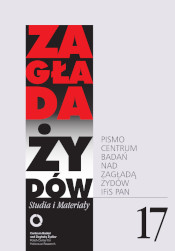

.jpg)
.jpg)


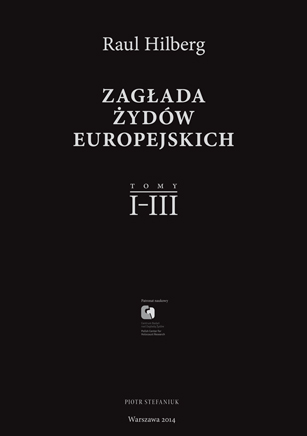
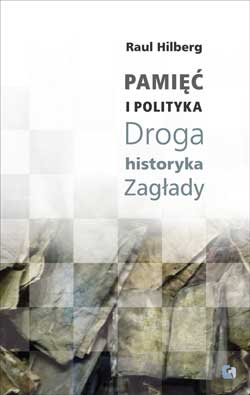
.jpg)
.jpg)
.jpg)
.jpg)
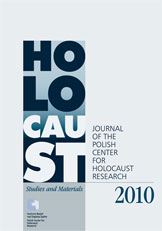

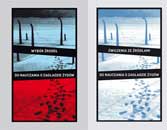
.jpg)
.jpg)
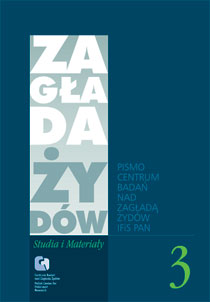
.jpg)
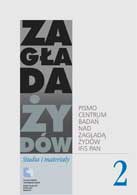


.jpg)

